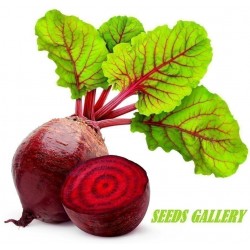Menu
-
MenuНазад
- Home
-
Категории
-
-
Категории
-
Растительные Семена
-
Сорта по стране
- Сорта из Армении
- Сорта из БиГ
- Сорта из Хорватии
- Сорта из Франции
- Сорта из Германии
- Сорта из Греции
- Сорта из Венгрии
- Сорта из Индии
- Сорта из Италии
- Сорта из Японии
- Сорта из Северной Македонии
- Сорта из Перу
- Сорта из россии
- Сорта из Сербии
- Сорта из Словении
- Сорта из Испании
- Сорта из Тайланда
- Сорта из Турции
- Сорта из США
- Семена томатов
- Семена кукурузы
- Семья тыквы
- Бобовая семья
- Семена огурца
- Семена перца
- Морковная семья
- Луковая семья
- Семена салата
- Картофельная семья
- Капустная семья
- Семена редьки
- Семья свеклы
- Семена Aрбуза
- Семена Дыни
- Цветная капуста Семена
- Подсолнечное семейство
-
Сорта по стране
- Фруктовые Семена
- Семена Перец Чили - Habanero
- Лекарственные травы Семена
- Вьющиеся растения семена
- Деревья Бонсай Семена
- Пальмовые семена
- Семена декоративных трав
- Семена табака
-
Растительные Семена
-
-
-
-
- НОВЫЕ ПРОДУКТЫ
- Доставка - Оплата
- Регистрация
- FAQ
Результаты поиска
Товаров: 21.
Показано 13-21 из 21
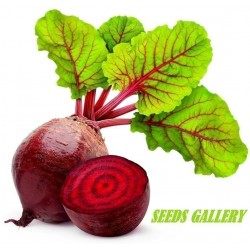
Beetroot 100 Seeds - Egyptian
Цена
1,15 €
SKU: VE 230
Seeds Gallery Com,
5/
5
<h2 class=""><strong>100 Seeds Egyptian Beetroot (Beta vulgaris)</strong></h2>
<h2 class=""><span style="color: #ff0000;"><strong>Price for Package of 100 seeds.</strong></span></h2>
<div>Heirloom variety dating back to 1800’s that produces a flattish beetroot with dark red flesh that has lighter zones. Excellent old fashioned flavour, eaten raw or cooked. Delicious edible tops</div>
<div>stay green and can be used as spinach or in salads. Early variety. 55 days.</div>
<script src="//cdn.public.n1ed.com/G3OMDFLT/widgets.js"></script>
VE 230 (1,5g)


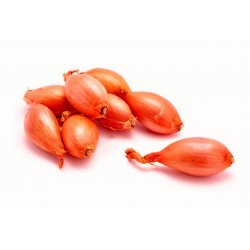
Shallot Long French Bulbs
Цена
2,50 €
SKU: P 404
Seeds Gallery Com,
5/
5
<h2><span style="text-decoration:underline;"><strong><em>Shallot Long French Bulbs</em></strong></span></h2>
<h2><span style="color:#d0121a;"><strong>Price for package with 5 Bulbs</strong></span></h2>
<p>An excellent, slightly elongated shallot, with copper-coloured skins and great tasting pink-tinged flesh. Each bulb yields 8-20 bulbs at harvest. Plant from mid January onwards. RHS Award of Garden Merit winner.</p>
<p>Grown in Brittany, in the heart of France’s main shallot growing region, these superb certified varieties are of superior quality and will produce an outstanding crop for you.</p>
<p><span><span>Hardiness:</span></span><span><span>-5 degrees</span></span></p>
<p><span><span><span>Bulbs:</span></span><span><span>True</span></span></span></p>
<p><span><span><span>Height:</span></span><span><span>31-40cm</span></span></span></p>
<p><span><span><span>Spread:</span></span><span><span>11-20cm</span></span></span></p>
<p><span><span><span>RHS Award of Garden Merit:</span></span><span><span>True</span></span></span></p>
<p><span><span><span>Beds & Borders:</span></span><span><span>True</span></span></span></p>
<p><span><span><span>Prefers Full Sun:</span></span><span><span>True</span></span></span></p>
<h1 class="title style-scope ytd-video-primary-info-renderer"><a href="https://youtu.be/GGEb4C2bb9s" target="_blank" rel="noreferrer noopener">Harvesting Shallots & Potatoes & Leeks</a></h1>
<h2><strong>WIKIPEDIA:</strong></h2>
<p>The <b>shallot</b> is a type of onion, specifically a botanical variety of the species <i>Allium cepa</i>.</p>
<p>The shallot was formerly classified as a separate species, <i>A. ascalonicum</i>, a name now considered a synonym of the currently accepted name.</p>
<p>Its close relatives include the garlic, leek, chive, and Chinese onion.</p>
<h2><span class="mw-headline" id="Names">Names</span></h2>
<div class="thumb tright">
<div class="thumbinner">
<div class="thumbcaption">Shallots are called "small onions" in South India and are used extensively in cooking there.</div>
</div>
</div>
<p>Shallots probably originated in Central or Southwest Asia, travelling from there to India and the eastern Mediterranean. The name "shallot" comes from Ashkelon, an ancient Canaanite city,<sup id="cite_ref-5" class="reference">[5]</sup> where people in classical Greek times believed shallots originated.<sup id="cite_ref-Field_Guide_6-0" class="reference">[6]</sup></p>
<p>The name <i>shallot</i> is also used for the Persian shallot <i>(A. stipitatum)</i>, from the Zagros Mountains in Iran and Iraq. The term <i>shallot</i> is further used for the French red shallot (<i>Allium cepa</i> var. <i>aggregatum</i>, or the <i>A. cepa</i> Aggregatum Group) and the French gray shallot or griselle (<i>Allium oschaninii</i>), a species referred to as "true shallot";<sup id="cite_ref-Field_Guide_6-1" class="reference">[6]</sup> it grows wild from Central to Southwest Asia. The name <i>shallot</i> is also used for a scallion in New Orleans and among English-speaking people in Quebec while the term <i>French shallot</i> refers to the plant referred to on this page.<sup id="cite_ref-7" class="reference">[7]</sup> Anglophone Quebecers and British English speakers stress the second syllable of <i>shallot</i>.</p>
<p>The term <i>eschalot</i>, derived from the French word <i>échalote</i>, can also be used to refer to the shallot.<sup id="cite_ref-8" class="reference">[8]</sup></p>
<h2><span class="mw-headline" id="Description_and_cultivation">Description and cultivation</span></h2>
<div class="thumb tleft">
<div class="thumbinner"><img alt="" src="https://upload.wikimedia.org/wikipedia/commons/thumb/a/a4/A._cepa_var._aggregatum_conreu.JPG/150px-A._cepa_var._aggregatum_conreu.JPG" width="150" height="113" class="thumbimage" /><div class="thumbcaption">
<div class="magnify"></div>
Shallot plant (<i>A. cepa var. aggregatum</i>) growing in Castelltallat, Spain</div>
</div>
</div>
<div class="thumb tright">
<div class="thumbinner"><img alt="" src="https://upload.wikimedia.org/wikipedia/commons/thumb/9/9c/2005onion_and_shallot.PNG/150px-2005onion_and_shallot.PNG" width="150" height="66" class="thumbimage" /><div class="thumbcaption">
<div class="magnify"></div>
Onion and shallot output in 2005</div>
</div>
</div>
<div class="thumb tright">
<div class="thumbinner"><img alt="" src="https://upload.wikimedia.org/wikipedia/commons/thumb/e/e2/Shallot_whole_plant.jpg/220px-Shallot_whole_plant.jpg" width="220" height="60" class="thumbimage" /><div class="thumbcaption">
<div class="magnify"></div>
Whole shallot plants, consist of roots, bulbs, leaves, stalks, and flowers</div>
</div>
</div>
<div class="thumb tright">
<div class="thumbinner"><img alt="" src="https://upload.wikimedia.org/wikipedia/commons/thumb/0/06/Shallot_seeds.png/150px-Shallot_seeds.png" width="150" height="113" class="thumbimage" /><div class="thumbcaption">
<div class="magnify"></div>
Shallot seeds</div>
</div>
</div>
<div class="thumb tleft">
<div class="thumbinner"><img alt="" src="https://upload.wikimedia.org/wikipedia/commons/thumb/f/fe/Shallot_%28Sambar_Onion%29_%281%29.JPG/150px-Shallot_%28Sambar_Onion%29_%281%29.JPG" width="150" height="113" class="thumbimage" /><div class="thumbcaption">
<div class="magnify"></div>
Shallots on sale in India</div>
</div>
</div>
<p>Like garlic, shallots are formed in clusters of offsets with a head composed of multiple cloves. The skin colour of shallots can vary from golden brown to gray to rose red, and their off-white flesh is usually tinged with green or magenta.</p>
<p>Shallots are extensively cultivated for culinary uses, propagated by offsets. In some regions ("long-season areas"), the offsets are usually planted in autumn (September or October in the Northern Hemisphere).<sup id="cite_ref-9" class="reference">[9]</sup> In some other regions, the suggested planting time for the principal crop is early spring (typically in February or the beginning of March in the Northern Hemisphere).</p>
<p>In planting, the tops of the bulbs should be kept a little above ground, and the soil surrounding the bulbs is often drawn away when the roots have taken hold. They come to maturity in summer, although fresh shallots can now be found year-round in supermarkets. Shallots should not be planted on ground recently manured.</p>
<p>In Africa, shallots are grown in the area around Anloga in southeastern Ghana.</p>
<p>Shallots suffer damage from leek moth larvae, which mine into the leaves or bulbs of the plant.</p>
<p></p>
P 404


Variety from Peru
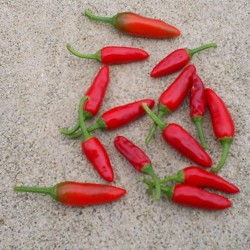
Aji Pipi de Mono Chili Seeds
Цена
1,85 €
SKU: C 101
Seeds Gallery Com,
5/
5
<!DOCTYPE html>
<html>
<head>
<meta http-equiv="Content-Type" content="text/html; charset=UTF-8" />
</head>
<body>
<h2><strong><em><span style="text-decoration: underline;">Aji Pipi de Mono Chili Seeds</span></em></strong></h2>
<h3><span style="color: #ff0000;"><strong>Price for Package of 5 seeds. </strong></span></h3>
<p>From the jungles of Peru comes the Pinguita de Mono Pepper – an Annuum type. Also known as “Little monkey dick”. This rare variety is among the hottest of the little Aji’s known in Peru measuring 70,000 – 80,000 Scoville units. The Aji Pinguita de Mono Pepper is found in all regions of the Peruvian jungle, mainly in the central valley of Chanchamayo.</p>
<p> </p>
<p>The plant is amazing and gets quite big. In a pot it grows to nearly 6 feet tall and as wide and it’s chock full of pods about 2.5cm long and around 1cm wide. An awesome producer that just continues to produce all season round.</p>
<p> </p>
<p>Flavour wise: Sweet with a touch of sour and a slight appleish as well. It is a quite unusual but amazing flavour, that you’ll have to try to believe it. We love the flavour as it is different.</p>
<p>Heat wise: Has a decent solid burn all over, that goes for ages as well.</p>
<p>The Pinguita de Mono Pepper is an easy grower, a big and bushy chilli plant, a great producer as it goes all season long, great flavour and an upper mid heat burn that you will love, we totally recommend this chilli variety.</p>
</body>
</html>
C 101

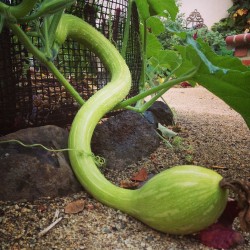
Winter squash Seeds...
Цена
2,35 €
SKU: VG 10
Seeds Gallery Com,
5/
5
<!DOCTYPE html>
<html>
<head>
<meta http-equiv="Content-Type" content="text/html; charset=UTF-8" />
</head>
<body>
<h2><span style="text-decoration: underline;"><strong><em>Winter squash Seeds TROMBETTA DI ALBENGA</em></strong></span></h2>
<h3><span style="color: #ff0000;"><strong>Price for Package of 3 seeds.</strong></span></h3>
<p>Trombetta di Albenga is an Italian heirloom climbing winter squash.</p>
<p>It’s a highly valuable variety, with a delicate flavor.</p>
<p> </p>
<p>The plant is a strong climber, with broad leaves, its fruits are thin, slightly crooked, trumpet-shaped, skin is pale green when unripe and yellow when ripe.</p>
<p> </p>
<p>Fruits can grow up to 1 m long, weighing as much as 5kg, but they are usually harvested when 20-30 cm long and used as courgettes. If harvested when 10-15 cm long they are very tender and can be eaten raw. The flesh of the ripe fruits is cooked to prepare puree, soups, ravioli stuffing or cakes. Seeds can be eaten slightly toasted and salted.</p>
<p> </p>
<p>Produces long, slender, white to pale yellow, 15-inch fruit with a bulb at the bottom. Picked while young and tender, they are delicious and sweet as summer squash. If allowed to mature, this is also great as a winter squash. As a winter squash, it is used for stuffing in gnocchi and ravioli, & for baking and pies!</p>
<p> </p>
<p>The mature fruit grow very long. Because of their unique shape and delicious flavor they are in very high demand at specialty markets, but can be a pain to store, for the same reason.</p>
<p> </p>
<p>Trombetta di albenga grows as an Annual and is a Vegetable. Being an Annual, it tends to grow best over the course of a single year. Trombetta di albenga is known for its Vine habit and growing to a height of approximately 2.00 metres (6.50 feet). Expect blooming to occur in early summer.</p>
<p>Italy is believed to be where Trombetta di albenga originates from.</p>
<p> </p>
<p>This plant tends to need a moderate amount of maintenance, so ensuring that you are aware of the soil, sun, ph and water requirements for Trombetta di albenga Winter squash is quite important to ensure you have a happy and healthy plant.</p>
</body>
</html>
VG 10 (3 S)


Разнообразие из Америки


Beefsteak Tomato Seeds...
Цена
1,75 €
SKU: VT 155
Seeds Gallery Com,
5/
5
<h2><span style="text-decoration:underline;"><strong><em>Beefsteak Tomato Seeds MORTGAGE LIFTER</em></strong></span></h2>
<h3><span style="color:#ff0000;"><strong>Price for Package of 5 seeds.</strong></span></h3>
<p>An outstanding Beefsteak Heritage variety, delivering large meaty fruits of excellent texture and flavour with few seeds. Indeterminate. The name was given by a 1930's farmer whose bumper crop of this variety enabled him to save his farm from repossession</p>
<p> </p>
<p>The Mortgage Lifter tomato was developed in the early 1930's in Logan, West Virginia by a radiator repairman, M.C. "Radiator Charlie" Byles. Without any experience in breeding, he made a successful cross of four of the largest tomatoes he could find - German Johnson, Beefsteak, an Italian variety, and an English variety. Radiator Charlie sold the first seedlings of his new tomato in the 1940's for one dollar each to customers who drove up to 200 miles for his famous plants that bore tasty tomatoes averaging two and a half pounds. With these sales, Charlie managed to pay off his $6,000 mortgage in only six years, and so the tomato was named Mortgage Lifter.</p>
<p> </p>
<p>Sow in spring under glass or on a windowsill 1/16 inch deep. Germination takes around 6-14 days at 65-75F.</p>
<p>Transplant the seedlings when large enough to handle into 3 inch pots.</p>
<p>Grow on under cooler conditions and when about 8 inches tall, either plant in their growing position in the greenhouse or gradually acclimatise them to outdoor conditions and plant out 18 inches apart in a warm and sunny spot in moist, fertile well drained soil and keep watered.</p>
<h2>What's the difference between "indeterminate" and "determinate" tomatoes?</h2>
<h2>Determinate tomatoes, or "bush" tomatoes</h2>
<p>are varieties that grow to a compact height (generally 3 - 4'). Determinates stop growing when fruit sets on the top bud. All the tomatoes from the plant ripen at approximately the same time (usually over period of 1- 2 weeks). They require a limited amount of staking for support and are perfectly suited for container planting.</p>
<h2>Indeterminate tomatoes</h2>
<p>will grow and produce fruit until killed by frost. They can reach heights of up to 12 feet although 6 feet is normal. Indeterminates will bloom, set new fruit and ripen fruit all at the same time throughout the season. They require substantial staking for support and benefit from being constrained to a central growing stem.</p>
<p> </p>
VT 155 (5 S)


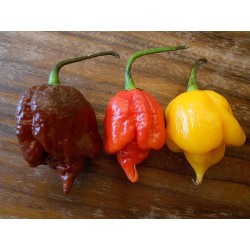
Trinidad Scorpion Red and...
Цена
2,95 €
SKU: C 2
Seeds Gallery Com,
5/
5
<h2><span style="text-decoration:underline;"><em><strong>Trinidad Scorpion Red and Yellow Seeds 1,5 mill. Scoville Units</strong></em></span></h2>
<h3><span style="color:#ff0000;">Price for Package of 5 seeds.</span></h3>
<div>Trinidad Scorpion chilli pepper is one serious chilli with more than a just sting in its tail – it’s an explosion! It is a bumpy shaped red chilli and a number of the pods develope the ‘tail’ hence the name of ‘scorpion’. Red Trindad Scorpion pods have a thin skin & measure 5-7.5cm long by 3cm wide. It is a tall variety that can reach 1m but it needs a long season to fruit so needs to be sown indoors very early in the season.</div>
<div> </div>
<div>Tricky to grow & germinate – needs very specific temps but when successful it is worth the effort & wait.</div>
<div>The Trinidad Scorpion is one of the Hottest Peppers in the World. Trinidad is a large Island northeast of Venezuela. The people of Trinidad love cooking with hot chiles. The Trinidad Scorpion though is not usually found in markets. In fact it is so hot many locals never use it for cooking. It's primary use is for military grade mace. It is also used in marine paint to keep barnacles from growing on the bottoms of boats. But the Trinidad Scorpion is still a favorite of chile heads around the world. Not just because it has the heat of a Bhut Jolokia. But it also has a great flavor as well. Just keep in mind you only need a small amount in whatever you cook. In my opinion it is hotter than the Bhut Jolokia. At least when I tasted it I had more pain than I felt with the Bhut Jolokia pepper.</div>
C 2

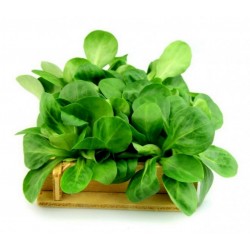
Corn Salad Lettuce 2000 Seeds
Цена
6,00 €
SKU: PL 8
Seeds Gallery Com,
5/
5
<h2><span style="font-size: 14pt;" class=""><strong>Corn Salad (Mache) Lettuce 2000 Seeds Heirloom (Valerianella locusta)</strong></span></h2>
<h2><span style="color: #ff0000;"><strong><span style="font-size: 14pt;">Package of 2000 seeds (8g).</span></strong></span><span style="color: #ff0000;"><strong><span style="font-size: 14pt;"></span> </strong></span></h2>
<div>
<div>These miniature salad greens have been popular in central and northern Europe for centuries, and was first popularized by Henry XIV during the 1590's. The dark green leaves are delightfully minty-sweet and productive. Best if grown during cool weather. Very cold hardy. <span style="font-size: 11px; line-height: 1.5em;">45 Days</span></div>
</div>
<div>Corn Salad is a wonderfully tasty salad crop for early spring and late fall.Harvest the small heads of oval, dark green leaves when 4" across.</div>
<div><strong>Wikipedia:</strong></div>
<div>Valerianella locusta is a small dicot annual plant of the family Valerianaceae. It is an edible salad green with a characteristic nutty flavor, dark green color, and soft texture. Common names include corn salad (or cornsalad), lamb's lettuce, mâche, fetticus, feldsalat, nut lettuce, field salad and rapunzel. In restaurants that feature French cooking, this salad green may be called doucette or raiponce, as an alternative to mâche, by which it is best known.</div>
<div>Description</div>
<div>Corn salad, also known as mâche or lamb's lettuce, grows in a low rosette with spatulate leaves up to 15.2 cm long. It is a hardy plant that grows to zone 5, and in mild climates it is grown as a winter green. In warm conditions it tends to bolt to seed.</div>
<div>Corn salad grows wild in parts of Europe, northern Africa and western Asia. In Europe and Asia it is a common weed in cultivated land and waste spaces. In North America it has escaped cultivation and become naturalized on both the eastern and western seaboards.</div>
<div>As a cultivated crop, it is a specialty of the region around Nantes, France, which is the primary source for mâche in Europe.</div>
<div>History</div>
<div>Corn salad was originally foraged by European peasants until Jean-Baptiste de La Quintinie, royal gardener of King Louis XIV, introduced it to the world. It has been eaten in Britain for centuries and appears in John Gerard's Herbal of 1597. It was grown commercially in London from the late 18th or early 19th century and appeared on markets as a winter vegetable, however, it only became commercially available there in the 1980s. American president Thomas Jefferson cultivated mâche at his home, Monticello, in Virginia in the early 1800's.</div>
<div>The common name corn salad refers to the fact that it often grows as a weed in wheat fields. (The European term for staple grain is "corn".) The Brothers Grimm's tale Rapunzel may have taken its name from this plant.</div>
<div>Nutrition</div>
<div>Like other formerly foraged greens, corn salad has many nutrients, including three times as much vitamin C as lettuce, beta-carotene, B6, B9, vitamin E, and omega-3 fatty acids. It is best if gathered before flowers appear.</div><script src="//cdn.public.n1ed.com/G3OMDFLT/widgets.js"></script>
PL 8 (8g)

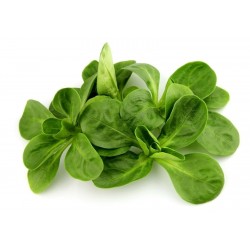
Corn Salad Seeds D'OLANDA A...
Цена
1,55 €
SKU: PL 9
Seeds Gallery Com,
5/
5
<h2><strong>Corn Salad Seeds D'OLANDA A SEME GROSSO</strong></h2>
<h2 class=""><span style="color: #ff0000;"><strong>Price for Package of 350 (1g) seeds.</strong></span></h2>
<p>Lamb’s lettuce in the UK, valeriana in Italy, corn salad in the USA and mache in France. Larger leaves than Cambrai, soft and tender texture with same great taste and cold resistance A favourite of those from cold climates where it was the first green salad vegetable to emerge from the melting snow. A delightful salad green that will only do well if grown when cold, but has great cold resistance. Direct seed in rows early spring and autumn and thin to 10cm.</p><script src="//cdn.public.n1ed.com/G3OMDFLT/widgets.js"></script>
PL 9 (1g)


